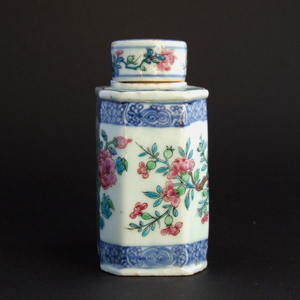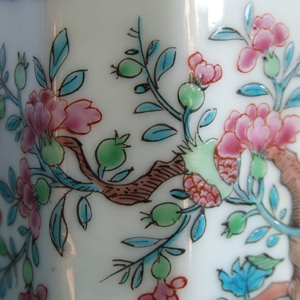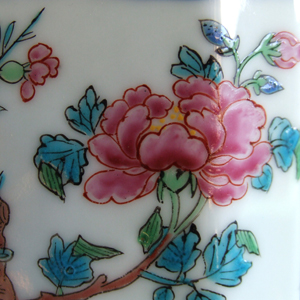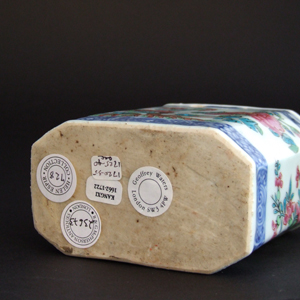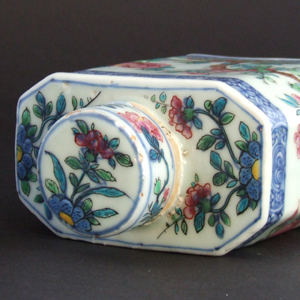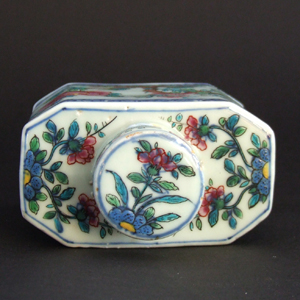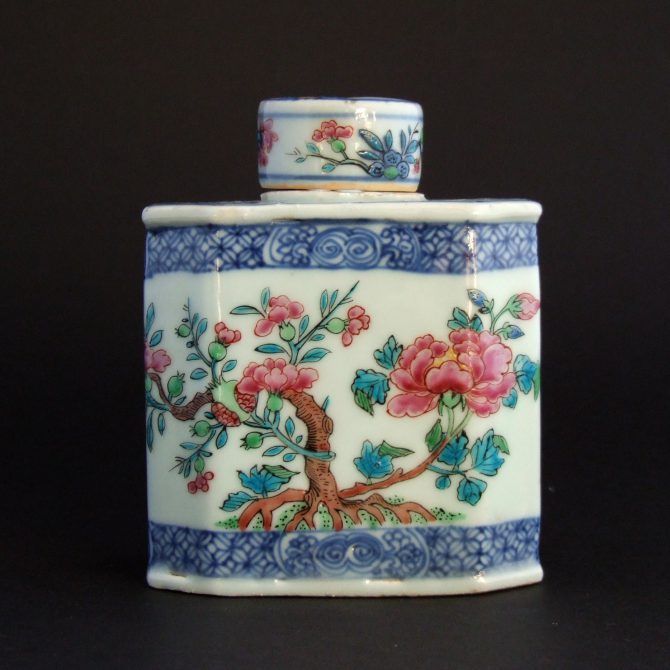
KANGXI or YONGZHENG c.1715 – 1730 Dutch Decorated Chinese Porcelain
An Early 18th Century Chinese Blue and White and Incised Tea Canister and Cover, Late Kangxi or Yongzheng c.1715-1730. The Dutch Enamelling, in the Famille Rose Style was Added c.1720-1740. The Design is of an Old Tree Peony.
SOLD
- Condition
- Very good, a very small amount of light fritting to the cover.
- Size
- Height : 12 cm (4 3/4 inches)
- Provenance
- Geoffrey Waters, Kings Road London. 27th July 1999. The Helen Espir Collection of European Decorated Chinese Export Porcelain : "a member of the Oriental Ceramic Society and collector, with her husband. Having made a typical collection of Song and provincial Ming blue and white, they decided to concentrate on what used to be called `clobbered` porcelain. She is the author of the standard work on the subject, European Decoration on Oriental Porcelain,2005, the first to examine the work of European decorators on Chinese porcelain throughout the eighteenth and nineteenth centuries, focusing on enamellers in Holland, Germany and England. She has learned Chinese." From Provenance ; Collectors, Dealers & Scholars : Chinese Ceramics in Britain & America (Roy Davids, Dominic Jellinek, Privately Printed, 2011. ISBN 978-0-9570148-0-0).
- Stock number
- 23673
Information
Peony :
Peonies are the most commonly encountered flower on Chinese porcelain, indeed in Chinese art in general. There are two cultivated types of peony commonly depicted, the tree peony Paeonia Suffruicosa (Mudan) and the herbaceous peonyP.Lactiflora (Shaoyao). Both have rich exuberant flowers with thin silk like petals but the plants are rather different to each other. The tree peony is not in fact a tree but a deciduous shrub, sometimes rather large and sprawling, it has irregular woody stems. It shares a similar leaf and flower form to the herbaceous peony but they are not close in other ways. The Chinese refer to the peony as the `King of flowers` and are seen as equivalent to the first rank among officials. The flowers are closely associated with royalty because they have been grown in imperial gardens since the Sui dynasty (581-618). The peony is one of the flowers of the four seasons and represents the Spring. It symbolizes wealth and honour, honour in the sense of high rank, having an official position, or high social status.
Exhibited and Published :
An exhibition at the British Museum organised by the Oriental Ceramics Society `East Meets West : Oriental Porcelain Decorated in Europe` in 2000. Published in `Transactions of the Oriental Ceramic Society` Volume 65. 2000-2001. Item 38, page 113.
Published :
European Decoration on Oriental Porcelain 1700 - 1830 (Helen Espir, Jorge Welsh Books, 2005) page 111, plate 46.
